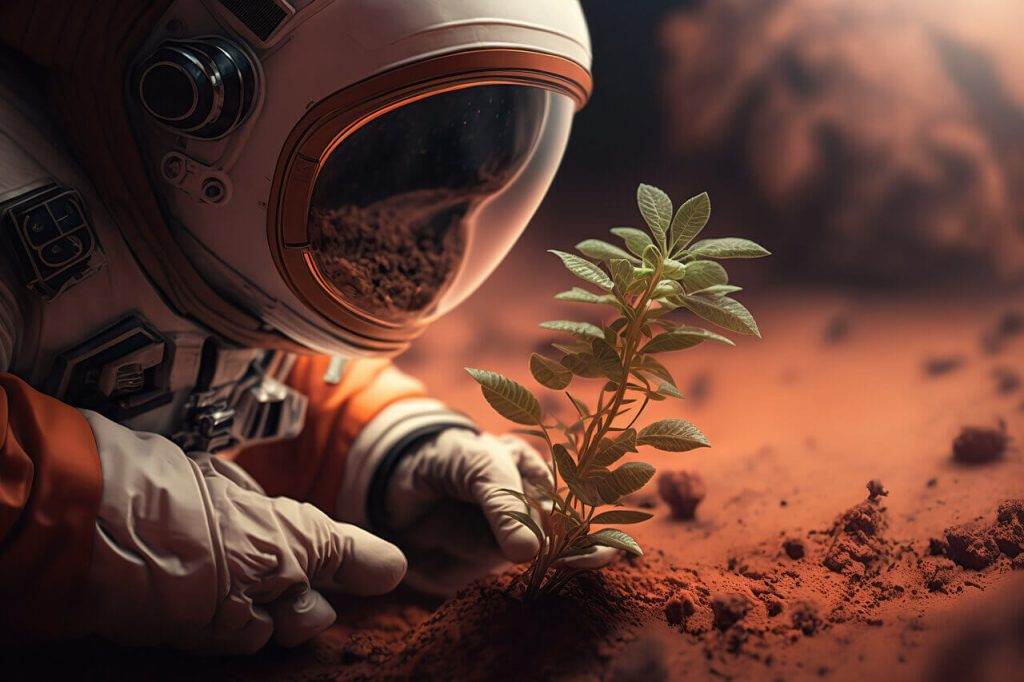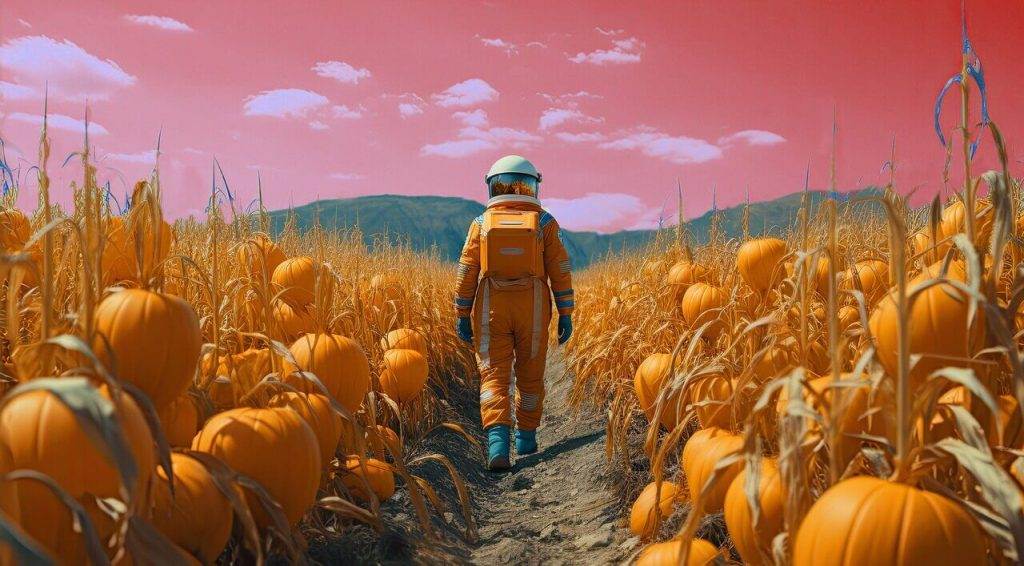“Live in a Healthy Space” Design Competition: Guidelines

These guidelines are not rules (see Competition Rules). The Guidelines provide topic areas for consideration on essential and optional parameters required to construct an agriculturally focused module or area that is part of a space settlement. The three main components that are needed to be addressed are:
- Infrastructure: The module’s (or area’s) design and construction. Consider needed utilities, recycling capacity, energy sources, water usage, waste treatment disposal, storage, etc. Consider beginning with a small green space and explain how it will scale with increasing numbers of inhabitants or in scaling the variety of plants and animals.
- Method of Growing: The module’s (or area’s) environmental control system and crop sustainability plans. Consider, hydroponic, aeroponic, bioreactor, additive manufacturing (3D printing), vermiculture, storage facilities, aquaponic, conventional agronomy, animal husbandry, crop rotation schedules, etc. Consider minimizing labor by providing automation, control system technologies, robotics, types of farming tools and equipment, etc.
- Food Science: Relate Nutritional Guidelines (see below) to residents, plants, or animals used and living on the space settlement.
The submitted entry should provide the content that is of most interest to the team and their work.
To have the “Right Stuff” to reside in space, you have to Eat the Right Stuff!
Nutritional Guidelines
Proper nutrition is important for people to live and work in space, space settlements, and for long-duration space missions. There are many types of diets that can be implemented. Contestants in this competition should research and consider many different types of diets.
Based on current research and disease trends, contestants are encouraged to focus on diets that support optimal metabolic health. Such diets are insulin reducing and provide therapeutic nutrition. Diets of this style are characterized by an abundance of fresh, nutrient dense and anti-inflammatory foods including high-quality protein plants and animals, antioxidant rich vegetables and fruits, legumes, nuts, minimally processed whole grains, healthy fats and oils, and herbs and spices. Processed meats are generally excluded.
Biotechnology Consideration
Contestants should consider designing an agricultural module (or area) for the provision of foods and meals that address two or more of the following:
- Microbial crops and non-traditional crops if they:
- Enhance dietary variety and add to nutrition
- Can be used as feedstock or media for other crops or for additional food manufacture.
- Microbial fermentation allows edible proteins to be produced, such as single-cell proteins, using microorganisms like bacteria or fungi. These proteins can serve as an alternative protein source for space food, reducing the need for animal-based protein supplies from Earth.
- Biomanufactured (printed, cultured) foods such as engineered algae, bacteria, yeasts, etc.
- Bioreactor environments control where microorganisms or plant cells can grow and multiply under optimized conditions. Uses include cultivating microorganisms for single-cell protein production or to grow plant cells in a nutrient-rich medium to produce fresh and nutritious plant-based food in space.
- Biological waste recycling uses biotechnological processes like composting and microbial degradation to recycle organic waste.
- Genetic engineering enhances the nutritional content, resilience, and growth capabilities. For example, researchers can engineer crops to produce higher levels of essential nutrients, vitamins, and antioxidants, making them more nutritious for astronauts.
- CRISPR-Cas9 can be a revolutionary gene-editing tool. CRISPR-Cas9 can be used to precisely modify the genetic traits of plants, making them more adaptable to space environments and enhancing their nutrient content.
- Tissue engineering for three-dimensional cell structure cultivation resembling plant or animal tissues. Uses include growing fresh vegetables or even cultured meat, reducing the dependency on space-grown crops alone.
- Omics technologies provide valuable insights into the biological processes of space crops, helping researchers understand their responses to different space conditions and refine their growth and nutritional qualities. Examples include genomics, transcriptomics, proteomics, and metabolomics.
- Consider using bioinformatics, which could play a significant role in analyzing and managing the vast amounts of genomic and molecular data related to space crops. It can help identify gene candidates for crop improvement, predict potential health risks, and optimize nutritional profiles of space food.
- Consider the time it takes to grow the first crop and subsequent crops. Some crops might take a long time to grow (years).
- Consider methods for getting to the first crop fast.
- Consider developing more balanced diets than the standard Western diet that has been the standard diet for astronauts since research suggests it may not be optimal for long-duration space travel.

Contestants should consider designing an agricultural module for the provision of foods and meals that address two or more of the following :
- Are naturally slow in absorption, preventing spikes in blood glucose and insulin.
- Are rich in dietary fibers to nourish and feed the gut microbiome.
- Consider natural strategies to address fungal, microbial, and arthropod issues for plants, and for the control of animal infections when feasible.
- Consider ‘minimal processing’ to bring the harvested food “from farm to table”. This includes steps such as percentage yield from raw crop, pressing, grinding, drying, heating, fermentation, and centrifuging/settling as examples. The results can be directly edible, or used as input into various dishes. It would be advisable to show such processing into a food as a process diagram.
- Justify use of genetically modified foods or food additives, if a strong case for their use is made. If modifications are considered, it should also be considered if these modifications affect long term reproduction of the crop in question.
- Consider meal timing and frequency (it’s not just about what you eat, but also when you eat).
- Consider important individual nutrients to highlight with respect to their role in overall health, longevity, and disease prevention. If supplements, vitamins and minerals, are recommended:
- A rationale for their use should be based on research results by independent studies.
- A description of where and how they will be provided to, or produced within, the settlement.
- Consider the inclusion of culinary preparations and meals that support healthy nutritional guidelines. Remember to include ALL ingredients and sources in a recipe. Many food preparations require water that is boiled and steamed off, or salt, spices, etc. In a space habitat all these items must be accounted for.
TIPS
- Avoid entries longer than 10 pages.
- Appendices may be no longer than 5 pages in total. Appendices may include graphs, charts, images, references, endnotes and other materials.
- Avoid including material not directly related to an agricultural module or area associated with a space settlement or food-producing-related issue. This is a competition to design the infrastructure and food needed to maintain a healthy lifestyle in a space settlement. Marginally related material will make it difficult for the judges. If the judges can’t find your infrastructure elements or understand the nutritional value of the foods produced easily, you won’t score well.
- Make sure you get the science correct!
- Make your design and nutritional content as quantitative as possible.
- Be creative. Surprise the judges. Put something of your own personality into your work.
- Consider alternate possibilities and clearly describe why you made the choices you did.
- Present your material clearly and neatly.
- When you discuss someone else’s ideas or work, which almost all entries do, reference it and add the resource to the bibliography. We recommend a reference format of {author year}. For example, you might write: Small children may not be allowed in the center of the cylinder since radiation levels are minimized near the hull [Horia 2005]. Then (for this example) in the Bibliography section at the end of your paper, put the following: [Horia 2005] Horia Mihail Teodorescu and Al Globus, “Radiation Passive Shield Analysis and Design for Space Applications,” SAE 2005 Transactions Journal of Aerospace.
- Have fun.
QUESTIONS
Send any questions associated with this Competition to [email protected].







